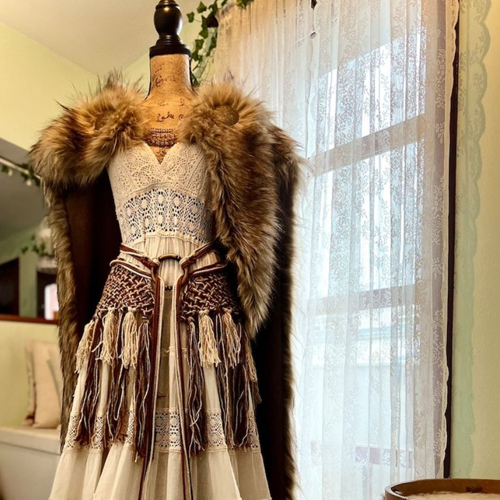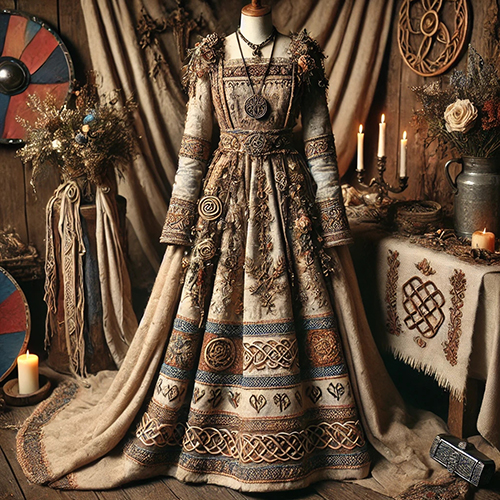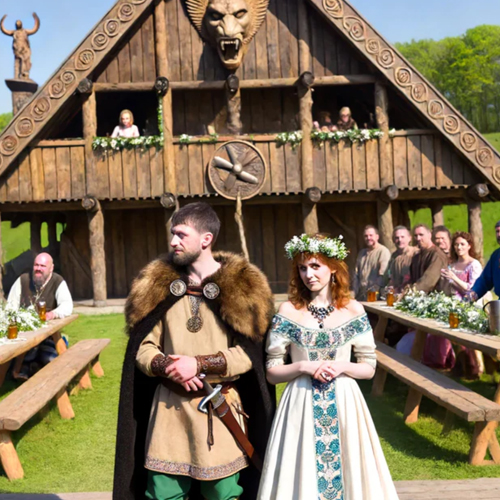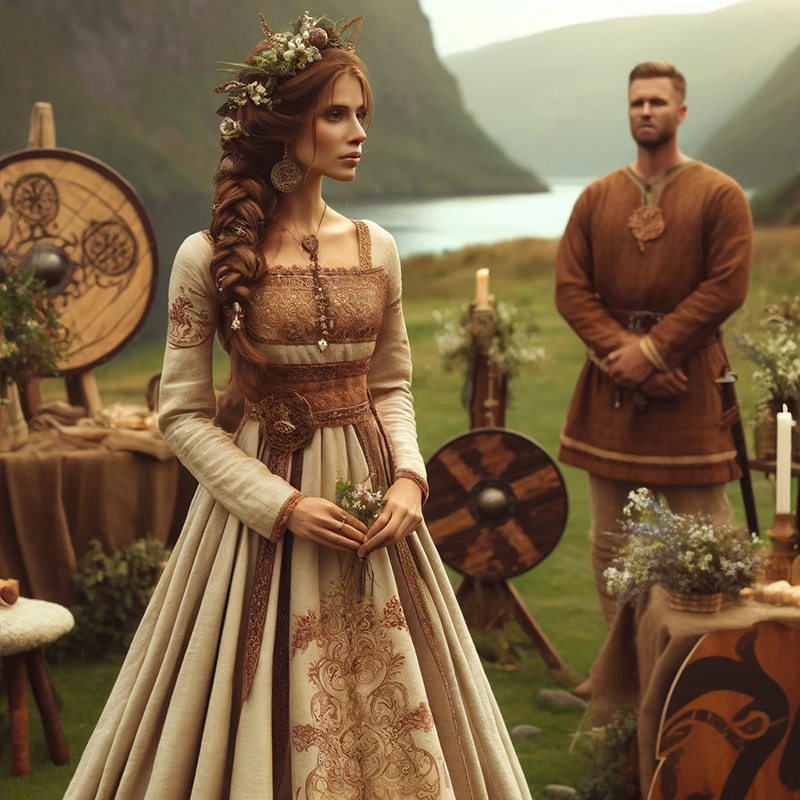Viking Blog
Viking Wedding Dress: A History and the Beauty of the Viking Era.
The Viking Age, from about 793 to 1066 AD, is a time of mystery, bravery, and rich culture. Viking weddings and their traditional attire captivate historians and fans alike. The Viking wedding dress is elegant and symbolic. It reflects the bride’s beauty and the Norse people’s traditions and values.
The Cultural Significance of Viking Weddings
Viking weddings were more than a union of two individuals. They were key events, symbolizing alliances between families and communities. The organizers planned these ceremonies with great attention to detail. Preparations could span weeks, even months. They involved brewing ale, preparing feasts, and gathering gifts. Marriages were usually arranged. They aimed to strengthen family ties, secure resources, and forge political alliances. The wedding was a public declaration of a new bond. It solidified the connection between families and clans.
At the heart of these ceremonies was a deep respect for Norse gods and goddesses. They invoked Freyja, the goddess of love and beauty. She would bless the union, ensuring a fruitful and loving marriage. People might make offerings of flowers and precious metals at her altar. Thor, the god of thunder and protector of homes and families, was also called upon to safeguard the couple. They might perform rituals to consecrate their home. This would invoke his protection.

The Viking Wedding Dress: Symbolism and Style
The Viking wedding dress was a key garment. It showed status, personality, and respect for tradition. A skilled artisan crafted the symbolic outfit with great care. It held the bride’s and her family’s hopes and dreams. Here are some key features:

- Luxurious Fabrics: The finest materials made the dresses. They reflected the bride’s high status. Linen and wool were common choices. Linen was lighter, and wool was warmer. Those of higher status would reserve finer linen and softer wool. Wealthier families could afford imported silks, showcasing the Vikings’ extensive trade networks.
- Vibrant Colors: Viking brides often wore vibrant colors like deep red, blue, and green. These colors held symbolic meanings within Norse culture. Red stood for love and passion. Blue symbolized trust and loyalty. Green signified fertility and growth.
- Intricate Embroidery and Metalwork: Many dresses featured intricate embroidery. Common motifs included spirals, representing life’s links. Knots symbolized bonds. Animal designs invoked the strength of wolves and ravens. Wealthier brides adorned their dresses with metallic threads, beads, and decorative brooches.
- Cloaks and Accessories: A bride’s outfit was often complemented by a cloak. A statement brooch called a “fibula” fastened it. These cloaks, usually made of wool or fur, kept people warm and added grandeur. Jewelry was important. Artisans made necklaces, bracelets, and rings from bronze, silver, or gold. These pieces often featured intricate designs and symbolic motifs.
- The Bridal Crown: One of the most iconic elements was the bridal crown. These crowns, often silver or bronze and ornate, symbolized purity and a link to the divine. In some regions, people used floral wreaths. They believed that flowers and herbs brought good luck.
The Role of the Groom and Guests in Viking Wedding Attire
The bride’s attire was the centerpiece. But the groom and guests wore impressive outfits, too. Grooms wore tunics and cloaks made from fine fabrics, often decorated with embroidery. They might carry a sword or axe as a symbol of their strength. Guests wore their finest garments, contributing to the festive atmosphere.

Modern Interpretations of Viking Wedding Dresses
Today, the allure of Viking wedding dresses continues to inspire modern brides. Designers often draw from the details of Viking attire. They use flowing fabrics, bold colors, and intricate embroidery. Modern Viking-themed weddings often blend historical authenticity with contemporary aesthetics.
Conclusion
The Viking wedding dress shows the Norse people’s creativity and culture. It reflects their values. Its vibrant colors, rich fabrics, and symbols tell a story of love, unity, and respect for tradition. The Viking wedding dress enchants. It fascinates both history fans and brides-to-be seeking inspiration. Its beauty is timeless.

